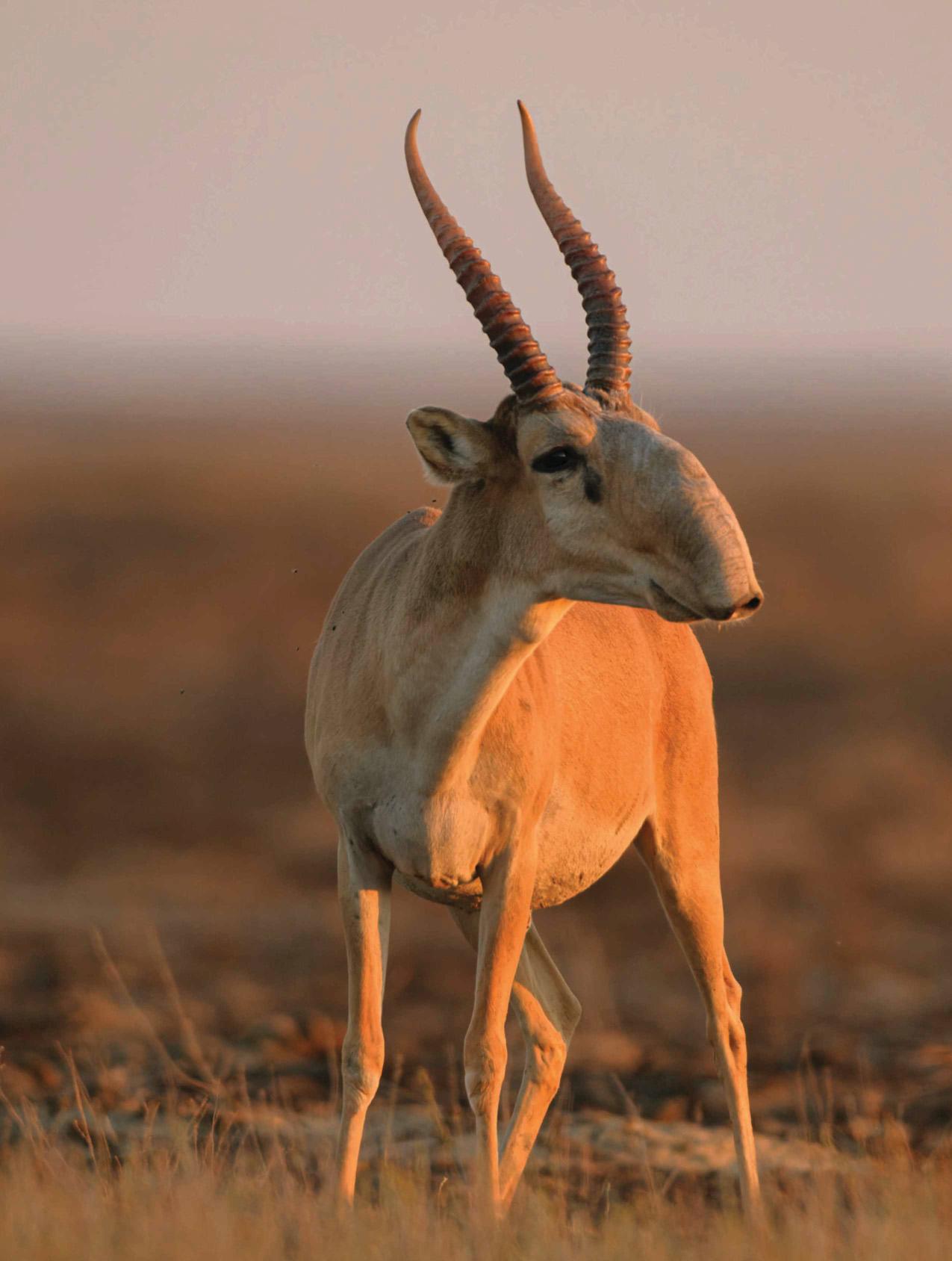
WE'RE FOLLOWING AN old Soviet-era map across the Kazakh Steppe when the first saiga break cover. Heads down, they charge through the knee-high grass reaching speeds of up to 120kph, a hard-wired legacy from the days when Asiatic cheetahs were the top predators on these central Asian grasslands.
Following decades of conservation work, this strange-looking antelope, which wouldn't be out of place on the set of Star Wars, is back, with more than 2.8 million individuals now roaming the landscape. But 20 years ago, the picture was quite different.
A relic from the last ice age, the saiga once rubbed shoulders with the mammoth and woolly rhinoceros. It is incredibly tough, able to survive the worst extremes the steppe can muster. In winter, when temperatures plummet to -45°C, it grows a thick shaggy coat, while its bulbous nose warms the cold air it breathes. In summer, when the mercury can hit 45°C, its nose helps to filter dust, as well as cooling the blood.
THE KAZAKH STEPPE IS A VAST wilderness, stretching from the Ural Mountains in the west to Mongolia in the east. Covering more than 800,000km², it represents a quarter of the world's remaining temperate grassland. It's a flat, featureless landscape, punctuated by isolated farms and occasional bursts of green, as plants flourish around the scrapes where snowmelt lingers well into summer. The heat of the sun brings out an intoxicating smell of wormwood and other herbaceous plants, while the air buzzes with insects and the familiar trilling of skylarks.
Kazakhstan is the ninth-largest country in the world and a territory of the former Soviet Union. When communism collapsed in the 1990s, so did the country's agrarian economy, with a mass exodus of people from the countryside to the cities. Farms were abandoned, livestock disappeared and the state-sponsored harvesting of saiga for meat also came to an end.
Esta historia es de la edición January 2025 de BBC Wildlife.
Comience su prueba gratuita de Magzter GOLD de 7 días para acceder a miles de historias premium seleccionadas y a más de 9,000 revistas y periódicos.
Ya eres suscriptor ? Conectar
Esta historia es de la edición January 2025 de BBC Wildlife.
Comience su prueba gratuita de Magzter GOLD de 7 días para acceder a miles de historias premium seleccionadas y a más de 9,000 revistas y periódicos.
Ya eres suscriptor? Conectar

SNAP-CHAT
Justin Gilligan on giant spider crabs and holding hands with an octopus

STEPPE CHANGE
Herds of saiga have returned to Kazakhstan, but there's a fine balance to tread

TREES FOR LIFE
Community is at the heart of conservation in the tropical forests of southern Belize

WHEN DOVES CRY
Turtle doves are now the UK's fastest declining bird species, but the RSPB is on a mission to save them

SURVIVAL OF THE CUTEST
We can't help being drawn to cute creatures, but our aesthetic preferences both help and hinder conservation

LIGHT ON THE NORTH
Spectacular images of Arctic foxes, reindeer and musk oxen reveal the wild beauty and diversity of Scandinavia

ROLLING IN THE DEEP
The super-sized crustacean that lives in the deepest, darkest ocean

LET'S GET TOGETHER
Clay licks deep in the Amazon explode in a riot of colour, with macaws the stars of the show

FEMALE OF THE SPECIES
To sponge or not to sponge? That is the question for the bottlenose dolphins (Tursiops aduncus) living in Shark Bay, Western Australia.

7 nature encounters for the month ahead
WITH NATURALIST AND AUTHOR BEN HOARE